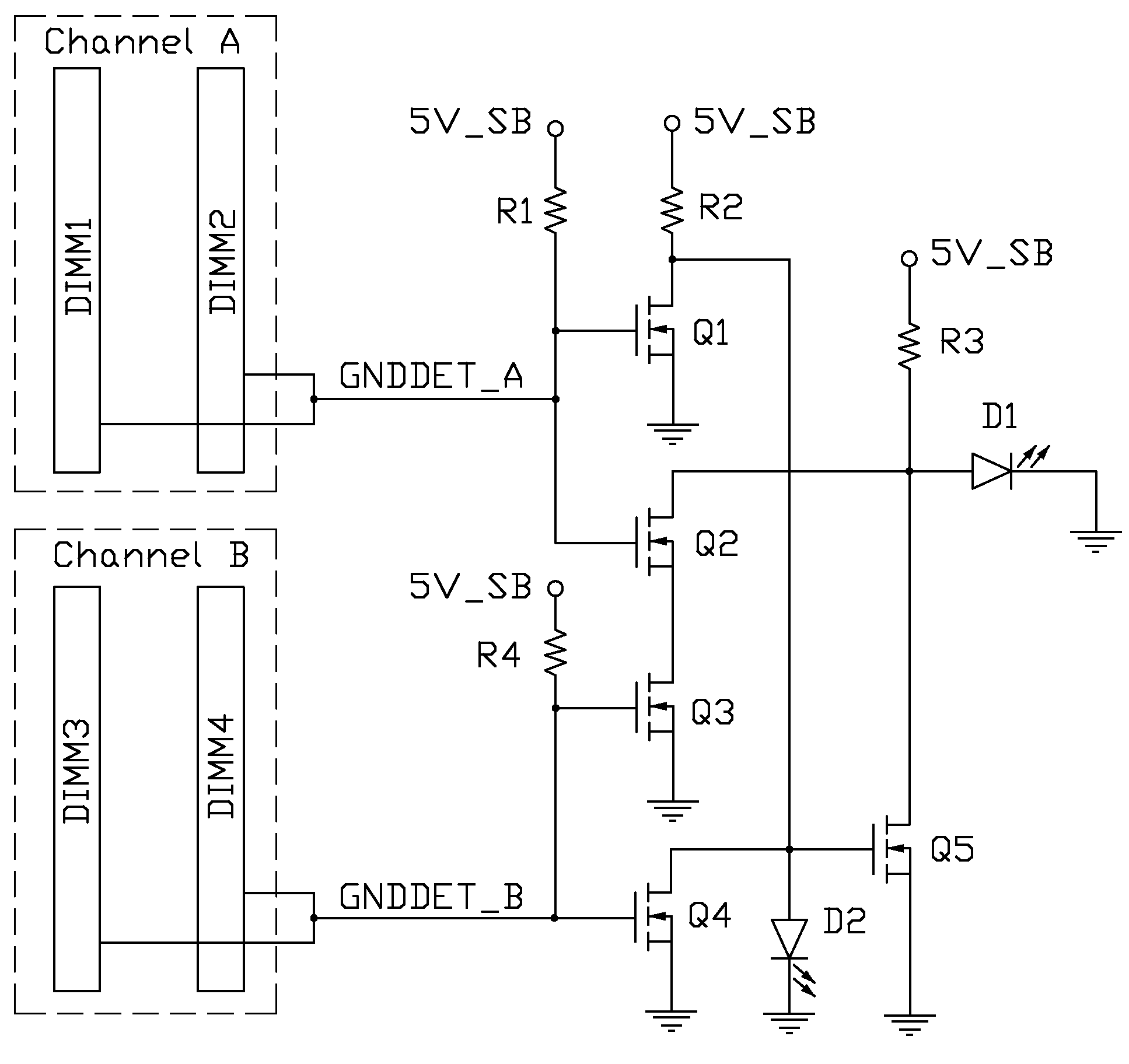Memory detecting circuit
a memory detection and circuit technology, applied in the field of detection circuits, can solve the problems of cpu with nothing to process, cpu with a bus speed greater than the ram speed, and costing a lot of time to arrange memories
- Summary
- Abstract
- Description
- Claims
- Application Information
AI Technical Summary
Benefits of technology
Problems solved by technology
Method used
Image
Examples
Embodiment Construction
[0008]Referring to the drawing, a memory detecting circuit for a motherboard in accordance with an embodiment of the present invention includes five N type metal oxide semiconductor (NMOS) transistors Q1˜Q5, four resistors R1˜R4, and two light emitting diodes D1 and D2.
[0009]The gate of the NMOS transistor Q1 is arranged to receive a standby power 5V_SB provided by the motherboard via the resistor R1, and also connected to ground lines of two memory sockets DIMM1 and DIMM2 to receive a first memory detecting signal GNDDET_A. The drain of the NMOS transistor Q1 is arranged to receive the standby power 5V_SB via the resistor R2. The source of the NMOS transistor Q1 is grounded. The gates of the NMOS transistors Q1 and Q2 are connected to each other. The drain of the NMOS transistor Q2 is arranged to receive the standby power 5V_SB via the resistor R3, and also connected to the anode of the light emitting diode D1. The source of the NMOS transistor Q2 is connected to the drain of the N...
PUM
 Login to View More
Login to View More Abstract
Description
Claims
Application Information
 Login to View More
Login to View More - R&D
- Intellectual Property
- Life Sciences
- Materials
- Tech Scout
- Unparalleled Data Quality
- Higher Quality Content
- 60% Fewer Hallucinations
Browse by: Latest US Patents, China's latest patents, Technical Efficacy Thesaurus, Application Domain, Technology Topic, Popular Technical Reports.
© 2025 PatSnap. All rights reserved.Legal|Privacy policy|Modern Slavery Act Transparency Statement|Sitemap|About US| Contact US: help@patsnap.com


